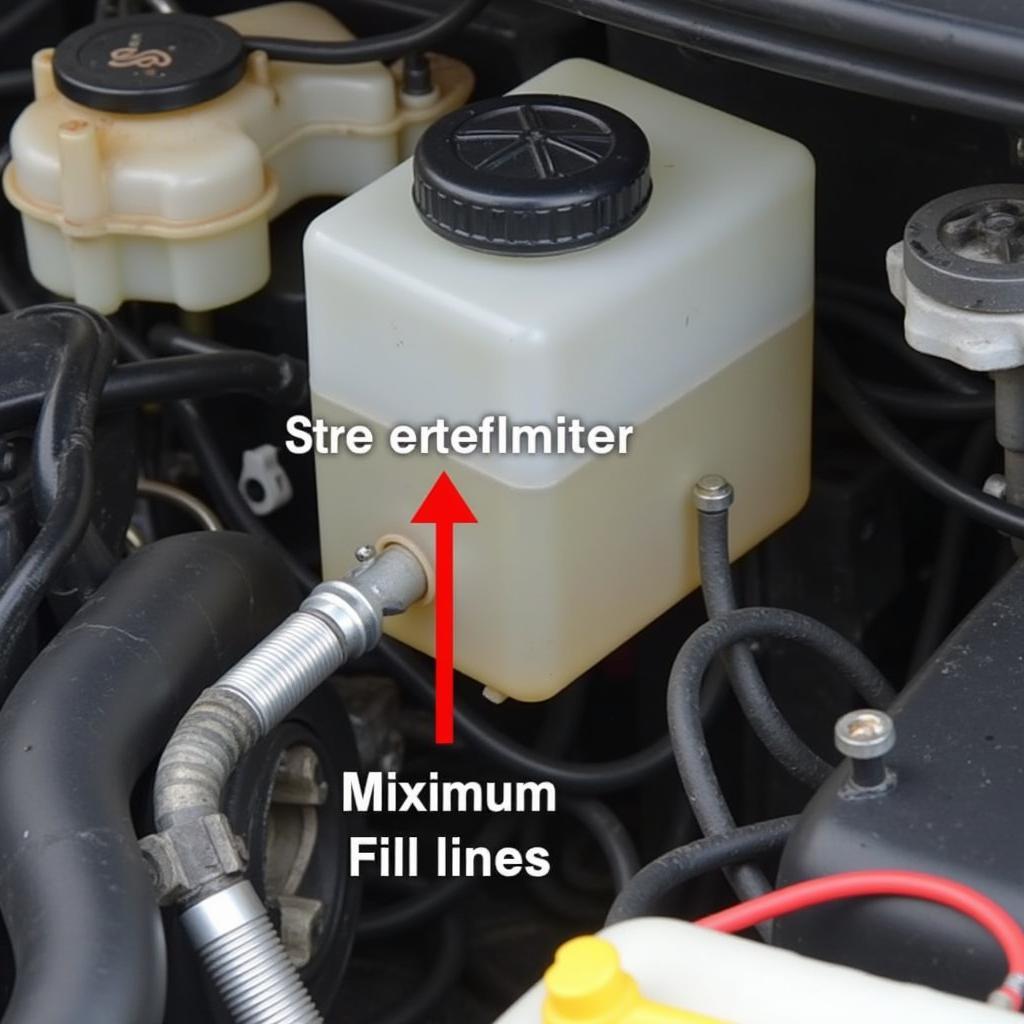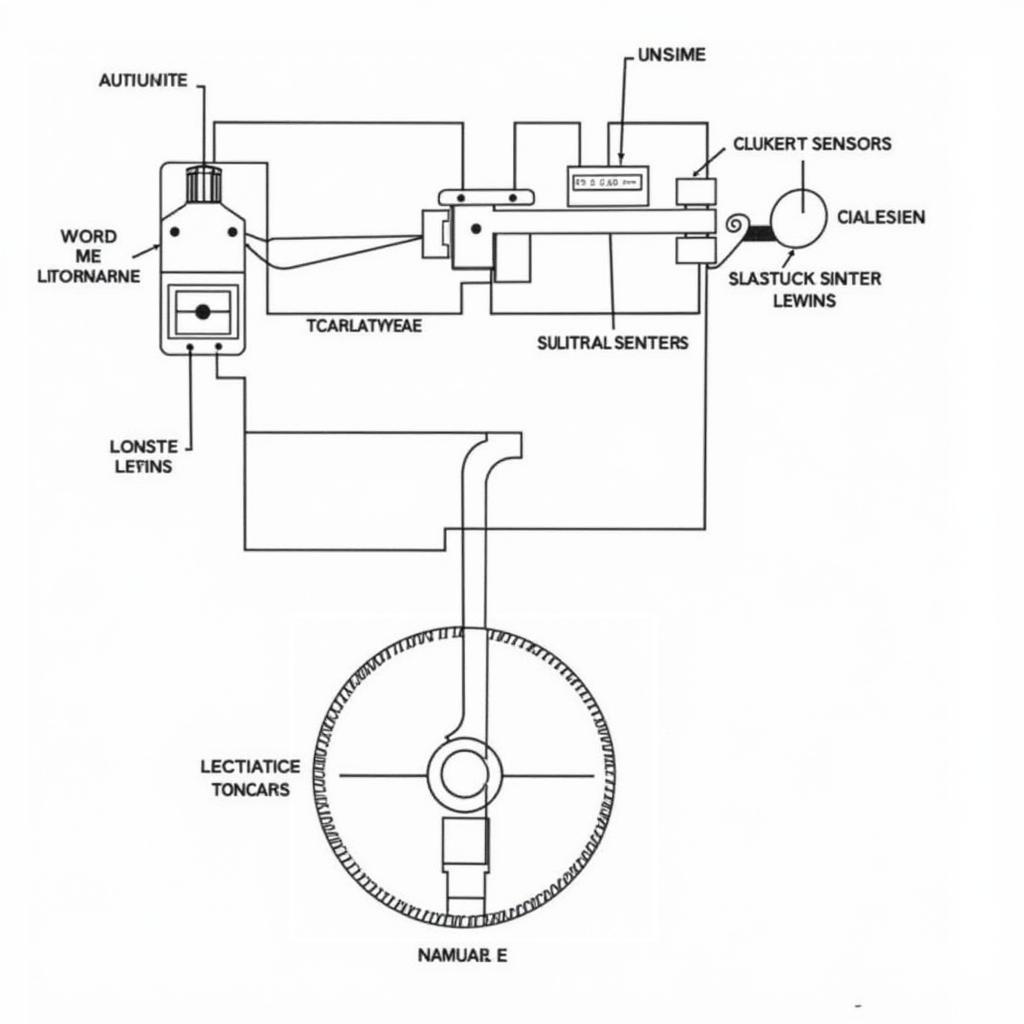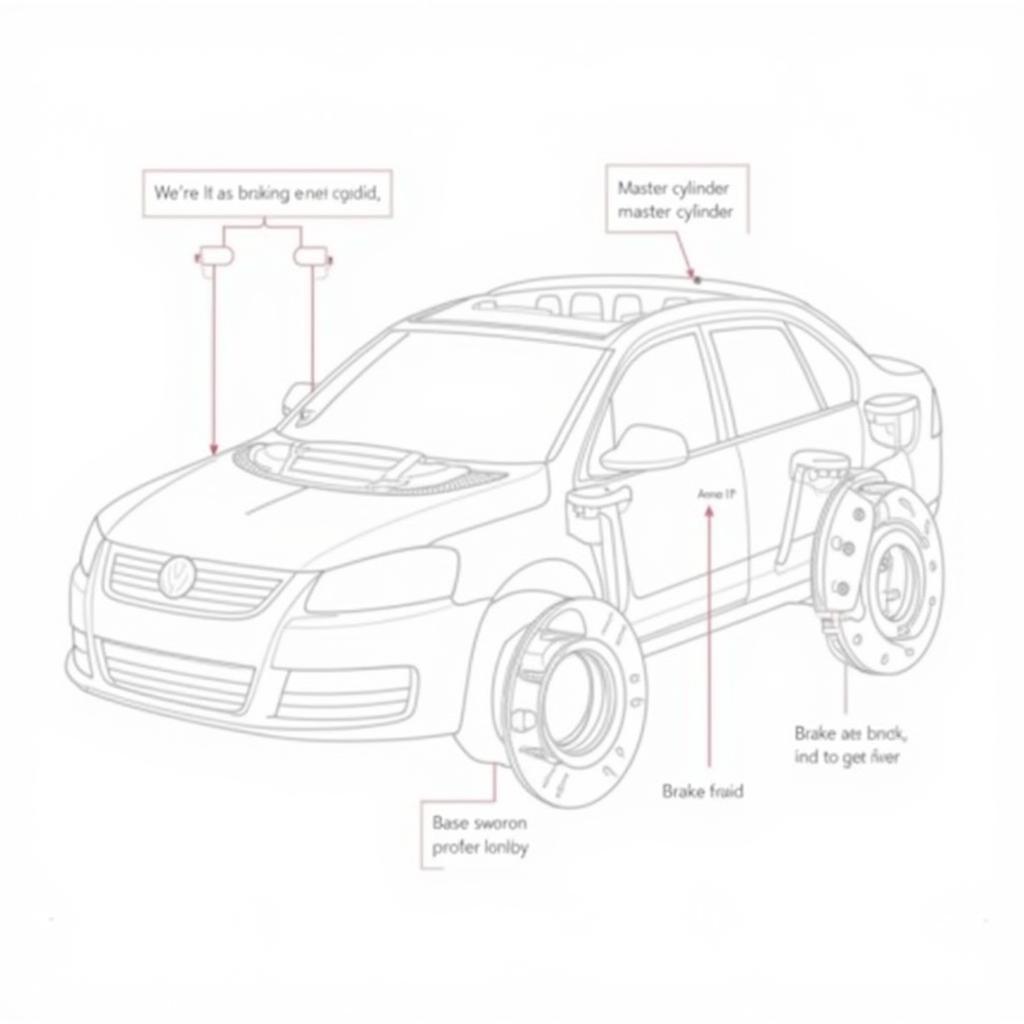The dreaded illumination of both the service engine soon light and the brake warning light on your 2000 Chevy Silverado can be a real head-scratcher. Why are both lights on? What does it mean? And, most importantly, what do you do about it? This article will delve into the common causes of this dual-light warning on your 2000 Chevy Silverado, offering troubleshooting tips, diagnostic advice, and insights into remote software solutions for addressing these issues.
Understanding the Warning Lights
Before we jump into solutions, it’s important to understand what these lights signify. The service engine soon light is your truck’s way of telling you something isn’t right with the engine or emissions system. This could range from a loose gas cap to a more serious issue like a faulty sensor. The brake warning light, on the other hand, specifically indicates a problem with the braking system. This could be anything from low brake fluid to worn brake pads. When both lights illuminate simultaneously, it can suggest a connection between the two systems or a common underlying issue.
Common Causes of the Dual Warning
Several potential issues can trigger both the service engine soon light and brake warning light in a 2000 Chevy Silverado. One common culprit is low brake fluid, which can trigger both warnings. A faulty ABS (Anti-lock Braking System) module can also cause both lights to come on. Other potential causes include a failing brake light switch, a faulty speed sensor, or even issues with the vacuum system that powers the brake booster.
 Checking the brake fluid reservoir in a 2000 Chevy Silverado
Checking the brake fluid reservoir in a 2000 Chevy Silverado
Diagnosing the Problem
Diagnosing the exact cause requires a systematic approach. Start by checking the easiest things first, like the brake fluid level. If the fluid is low, top it off and see if the lights go off. If the problem persists, you’ll likely need to delve a little deeper. Using an OBD-II scanner can help pinpoint the issue by reading the trouble codes stored in the vehicle’s computer.
Using an OBD-II Scanner
An OBD-II scanner is a valuable tool for diagnosing car problems. By plugging it into your truck’s diagnostic port, you can access the trouble codes that illuminate the warning lights. These codes provide specific clues about the underlying problem, helping you narrow down the potential causes and avoid unnecessary guesswork.
Remote Diagnostics and Programming
Advancements in automotive technology have enabled remote diagnostics and programming, offering a convenient and efficient way to troubleshoot and fix certain issues. A qualified technician can remotely access your vehicle’s computer, analyze the trouble codes, and even reprogram certain modules, potentially resolving the problem without a physical visit to a repair shop.
“Remote diagnostics is a game-changer,” says John Smith, Senior Automotive Diagnostician at Advanced Auto Solutions. “It allows us to quickly pinpoint the root cause of many issues and often implement fixes remotely, saving our customers time and money.”
Troubleshooting Tips and Solutions
Depending on the diagnosed issue, several solutions can be applied. If low brake fluid is the culprit, simply topping off the fluid may resolve the problem. However, it’s crucial to determine why the fluid was low in the first place. A leak in the brake lines could be a serious safety concern.
Addressing ABS Module Issues
If the ABS module is faulty, it may require replacement or repair. In some cases, the module may simply need to be reprogrammed, which can often be done remotely. This is where remote software solutions can be particularly helpful.
Brake Light Switch and Speed Sensor Issues
A faulty brake light switch or speed sensor can also trigger both warning lights. These components are relatively inexpensive and easy to replace, even for DIY enthusiasts.
Conclusion
Dealing with a service engine soon light and brake warning light simultaneously on your 2000 Chevy Silverado can be concerning. However, armed with the right information and diagnostic tools, you can effectively address the issue. Remember to start with the simple checks, utilize an OBD-II scanner, and consider remote diagnostic options for efficient and convenient solutions. “Addressing these warning lights promptly can prevent further damage and ensure your safety on the road,” adds Jane Doe, Certified Automotive Technician at Expert Auto Repair. Don’t ignore these warnings – take action to keep your 2000 Chevy Silverado running smoothly and safely.
FAQ
-
Can a faulty gas cap trigger both the service engine soon light and brake warning light? While a faulty gas cap can trigger the service engine soon light, it’s unlikely to activate the brake warning light.
-
Is it safe to drive with both lights on? It depends on the underlying cause. If it’s a minor issue like low brake fluid, you might be able to drive cautiously to a repair shop. However, if it’s a more serious braking system problem, driving could be dangerous.
-
How much does it cost to replace an ABS module? The cost can vary depending on the make and model of your vehicle and whether you choose a new or remanufactured module. Contact a qualified mechanic for a specific quote.
-
Can I reset the warning lights myself? You can sometimes temporarily reset the lights by disconnecting the battery. However, this won’t fix the underlying problem, and the lights will likely return if the issue persists.
-
How often should I check my brake fluid level? It’s a good practice to check your brake fluid level at least once a month.
-
What are some signs of a failing brake light switch? Common signs include brake lights that don’t work, difficulty shifting out of park, or cruise control that doesn’t function correctly.
-
Where is the OBD-II port located in a 2000 Chevy Silverado? The OBD-II port is typically located under the dashboard on the driver’s side, near the steering column.


